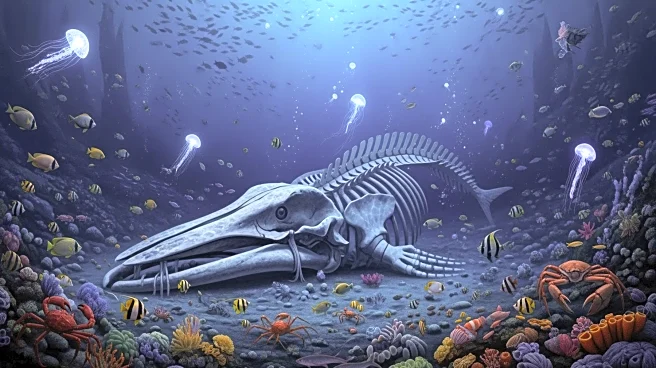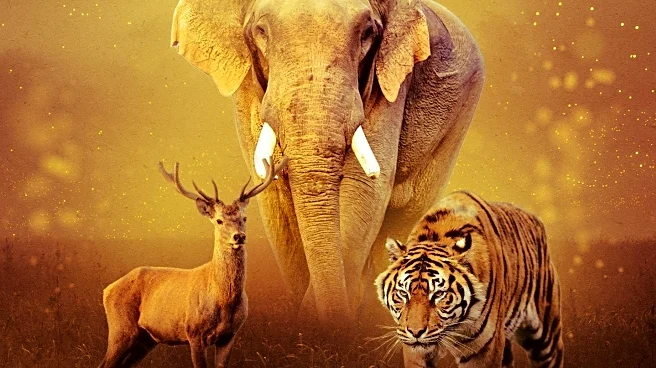What's Happening?
A recent study published in Royal Society Open Science has provided empirical evidence for geometric scaling in animals, focusing on sharks. Researchers used CT scans and digital tools to analyze the surface areas and volumes of over 50 shark species,
finding that their surface area and body mass follow a two-thirds scaling law. This suggests underlying constraints in evolution related to heat exchange, metabolism, or development. The study aims to explore whether this scaling rule applies universally across different animal groups, potentially influencing how life interacts with the environment.
Why It's Important?
Understanding geometric scaling in animals can have practical applications in fields such as veterinary medicine and pharmacology, where accurate dosing is crucial. The study's findings could lead to insights into fundamental mechanisms that limit life’s topology, impacting evolutionary biology and ecological research. By identifying scaling rules, researchers can better understand the constraints that shape animal forms and their interactions with the environment.
What's Next?
Further research is needed to test the two-thirds scaling rule in other animal groups, including terrestrial and warm-blooded animals. The study encourages collaboration among researchers to expand the understanding of biological scaling and its implications for evolution. Continued exploration of scaling relationships could lead to breakthroughs in evolutionary biology and ecological studies.
Beyond the Headlines
The study highlights the intersection of mathematics and biology, emphasizing the role of geometric principles in understanding life forms. The use of advanced imaging technology reflects broader trends in scientific research, where digital tools enhance data accuracy and analysis. The exploration of scaling laws in animals underscores the importance of interdisciplinary approaches in scientific discovery.













